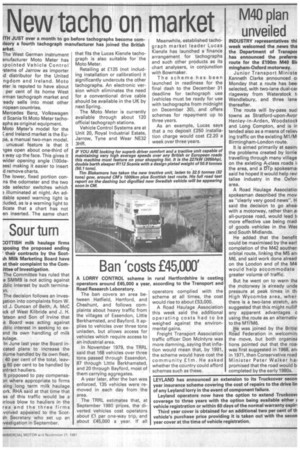Ban 'costs £45,000'
Page 5

If you've noticed an error in this article please click here to report it so we can fix it.
A LORRY CONTROL scheme in rural Hertfordshire is costing operators around £45,000 a year, according to the Transport and Road Research Laboratory. I operators complied with the The ban covers an area beI tween Hatfield, Hertford, and Cheshunt, and follows complaints about heavy traffic from the villages of Essendon, Little Berkhamsted, and Bayford. It applies to vehicles over three tons unladen, but allows access for vehicles which require access to an industrial area.
In November 1979, the TRRL said that 168 vehicles over three tons passed through Essendon, 87 through Little Berkhamsted, and 20 through Bayford, most of them carrying aggregates.
A year later, after the ban was enforced, 135 vehicles were removed in each day from the area.
The TRRL estimates that, at September 1980 prices, the diverted vehicles cost operators about £1 per one-way trip, and about £45,000 a year. If all scheme at all times, the cost would rise to about £53,000.
A Road Haulage Association this week said the additional operating costs had to be weighed against the environmental gains.
Freight Transport Association traffic officer Don McIntyre was more damning, saying that inflation would mean that, by 1991, the scheme would have cost the community Elm. He asked whether the country could afford schemes such as these.


















































